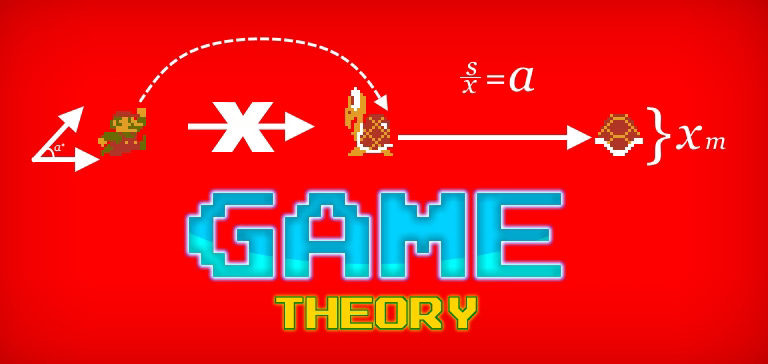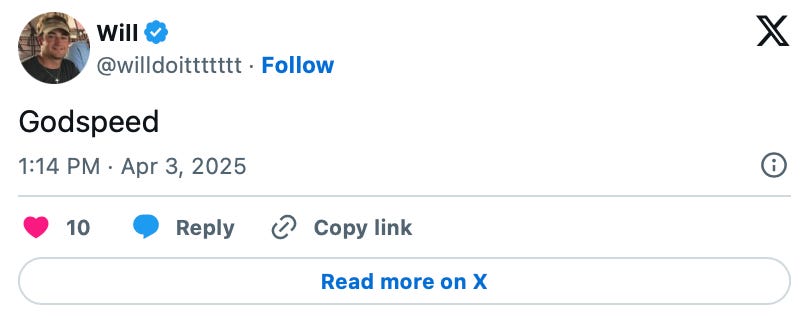Modernized Game Theory // Article VIII
Level 1
Game theory is a razor sharp framework for dissecting human behavior, predicting outcomes, and dominating any competitive arena… whether that’s a boardroom negotiation, a networking event, or the chaotic chessboard of life itself.
Strip away the jargon, and game theory is about understanding how people make decisions, how those decisions collide, and how you can engineer situations to your advantage.
Let’s break down these three core concepts and we will show you how to wield them to outmaneuver your rivals and seize control.
Nash Equilibrium
Prisoner’s Dilemma
Zero-Sum Games
I. The Foundation
At its core, game theory studies strategic interactions where the outcome for each player depends not just on their own choices but on everyone else’s. Think of it as a mental model for predicting and manipulating decisions in situations where stakes are high and trust is low.
It’s not about chance - it’s about calculating the incentives driving each player and exploiting them.
The concepts we’ll cover are your tools for decoding these dynamics.
Nash Equilibrium: The Point of No Regret
Named after John Nash, the Nobel-winning mathematician, a Nash equilibrium occurs when every player in a game has chosen a strategy where no one can improve their outcome by unilaterally changing their move.
Everyone’s locked in, and deviation only makes things worse. Picture a standoff where each side is poised with their best response, given what the others are doing.
In real life, Nash equilibrium shows up in negotiations. Imagine you’re haggling over a business deal. You want the highest profit margin, but pushing too hard risks collapsing the deal.
The other side wants a bargain but can’t lowball without losing credibility. Both sides settle at a price where neither can improve their position without screwing themselves (Nash equilibrium)
The actionable takeaway? Identify the equilibrium early. Map out what your counterpart values (price, terms, reputation) and position your offer where they’re incentivized to agree but can’t push further without risking the deal.
Preparation is power - know their bottom line before they do.
Prisoner’s Dilemma: Trust vs. Betrayal
The prisoner’s dilemma is the ultimate test of trust under pressure. Two suspects are arrested, held separately, and offered a deal… snitch on the other for a reduced sentence, or stay silent.
If both stay silent, they get light sentences. If both snitch, they both get harsh ones. If one snitches and the other doesn’t, the snitch walks free while the silent one gets slammed. The catch? They can’t communicate.
The rational move, assuming you trust no one, is to snitch because it minimizes your worst-case scenario. But if both players think this way, they both lose more than if they’d cooperated.
This dilemma haunts networking. You meet a contact who could open doors. Do you share your best leads, risking them taking advantage without reciprocating? Or do you hold back, signaling distrust and killing the relationship?
The high-IQ move is to build iterative trust. Start with small, low-risk gestures like sharing a minor insight or making a warm introduction. If they reciprocate, escalate. If they don’t, cut losses.
Over time, you create a “repeated game” where cooperation becomes the Nash equilibrium, because betrayal costs them future opportunities.
Always test the waters before diving in.
Zero-Sum Games: Winner Takes All
In a zero-sum game, one player’s gain is another’s loss.
There’s no win-win… someone’s walking away empty-handed. Think of a poker game or a job interview where only one candidate gets the gig.
Life isn’t always zero-sum, but key moments like salary negotiations or competitive markets are. Here, your goal is to maximize your slice of the pie while minimizing your opponent’s.
In salary talks, for instance, every dollar you secure is a dollar the employer doesn’t keep. The trick is to shift the frame. Don’t just negotiate salary, negotiate value. Demonstrate how your skills deliver ROI that far exceeds your ask.
Use data (industry benchmarks, past performance metrics) to anchor your number. If you’re interviewing, create leverage by signaling other offers (real or implied).
The employer’s rational move is to pay up rather than lose you.
Never enter a zero-sum game without an edge. Research, prepare, and always have a BATNA (Best Alternative to a Negotiated Agreement) to walk away if the deal doesn’t tilt in your favor.
II. Game Theory in Negotiations
Negotiations are a live-fire game theory lab. Every move carries strategic weight
Your Offer
Their Counter
The Silences
Nash equilibrium in action: In a multi-party deal, like a startup acquisition, each side (founders, investors, buyers) has a range of acceptable outcomes. The equilibrium is the deal where no one can improve their payout without derailing the whole thing. Your job is to shape that equilibrium. Before talks begin, map the incentives… buyers want low costs, investors want high returns, founders want control. Then craft a proposal that aligns just enough with everyone’s minimum to lock it in, but tilts the upside toward you. For example, offer a lower upfront price but secure performance-based bonuses. You’ve engineered a Nash equilibrium where others settle, but you win long-term.
Prisoner’s dilemma in negotiations: Trust is fragile when millions are on the table. Imagine negotiating a partnership. You could share proprietary data to prove your value, but what if they use it against you? They face the same risk. Break the dilemma by using staged commitments. Share a teaser of your data, enough to hook them but not enough to burn you. If they reciprocate, escalate. If they stonewall, pivot to a competitor. This turns a one shot dilemma into a repeated game where cooperation pays.
Zero-sum tactics: In a straight price negotiation, it’s you versus them. Anchor high - research shows the first number sets the tone. If you’re selling, name a price 20% above your target, backed by data (market rates, your unique value). Then concede strategically, making them feel they’ve “won” while you hit your real target. Always know your walk-away point - a weak BATNA makes you the prey.
III. Networking: The Infinite Game
Networking isn’t a one-off - it’s an infinite game where relationships compound over time. Game theory helps you navigate its unspoken rules.
Nash equilibrium in networking: The equilibrium here is mutual value exchange. You don’t spam contacts with asks, you offer something (insights, intros, expertise) that makes them want to engage. To dominate networking, always give first, but give strategically. Share a resource that costs you little but signals high value. This locks in a dynamic where they’re incentivized to reciprocate, creating a stable equilibrium of mutual gain.
Prisoner’s dilemma in networking: Every new contact is a gamble. Do you invest time and resources in someone who might ghost you? Mitigate this by starting small. Invite them to a low stakes coffee chat or share a quick tip via DM. If they engage, double down. If not, move on. Over time, you build a network of cooperators, not defectors. Track interactions to spot patterns of reciprocity.
Zero-sum moments: Networking events can feel zero-sum when everyone’s vying for the same VIP’s attention. Stand out by flipping the script. Instead of pitching yourself, ask a sharp, tailored question that shows you’ve done your homework on their work. This creates a memorable impression, shifting the “win” to you without costing them anything. If you aren’t curious about them or their business you better learn to be curious or learn to be good at pretending you are.
IV. Life as a Game: Strategic Dominance
Life itself is a series of games… some zero-sum, some cooperative, but all strategic. Applying game theory means seeing every interaction as a move on the board.
Want a promotion? That’s a negotiation game where you align your ask with your boss’s incentives (productivity, optics).
Want better relationships? That’s a repeated prisoner’s dilemma where small acts of trust build cooperation.
Even personal growth is a game - you versus your own inertia, with clear payoffs for discipline.
The approach is to always think two or more steps ahead. Map the players, their incentives, and the possible outcomes. Then shape the game to your advantage. In a job hunt, don’t just apply - create a narrative that makes employers come to you. In conflict, don’t react emotionally - calculate the other side’s rational move and counter it with precision.
Game theory isn’t a dusty textbook concept… it’s a weapon for navigating the modern world. Nash equilibrium teaches you to lock in optimal outcomes. The prisoner’s dilemma shows you how to build trust without getting burned. Zero-sum games train you to claim your share when the pie is fixed.
Whether you’re negotiating a deal, networking with power players, or plotting your next life move, these tools give you an edge.
The actionable takeaway? Start seeing life as a game board. Study the players, anticipate their moves, and engineer situations where you come out on top.
You’re not just playing - you’re rewriting the rules.







